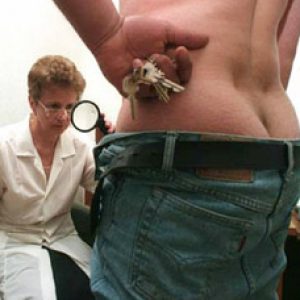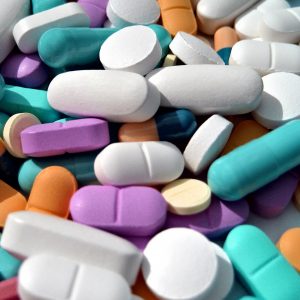Mycoplasmosis in men is an infection that is transmitted primarily through sexual contact. Currently there are several dozen types of Mycoplasma that can persist in humans.
But the main role in urological infections belongs to Mycoplasma genitalium, and Ureaplasma hominis urealiticum. Especially pathogenic among them is Mycoplasma genitalium. There are acute and chronic nature of the disease.
To date there is no consensus on what to do if during the diagnostics revealed Mycoplasma.
Do I need to treat the Mycoplasma?
Also there are no clear answers to the questions:
- Could Mycoplasma infection be the cause or predisposing factor in the development of inflammatory reactions?
- Whether it is necessary to take into account the presence of Mycoplasma in the body?
- Do I need to achieve the complete elimination of the pathogen?
- There is a need for treatment of sexual partner?
- Why not all people who are diagnosed with a Mycoplasma, have any adverse effects?
- What factors in patients with these pathogens lead to the development of the disease?

Important! There are 2 opinions regarding urogenital Mycoplasma:
- the infectious process will develop only under certain conditions;
- Mycoplasma is responsible for the development of the pathological process.
Some experts believe that the treatment was inappropriate, others argue that treatment is needed, because microorganisms can lead to the development of a number of serious complications, which include:
Mycoplasma genitalium – an indication for therapy. If infected with a couple, possible adverse outcome of pregnancy in a partner. But, if we turn to the who classification, these conditional pathogenic still considered as probable etiologic agents negonokokkovi nonspecific urethritis, inflammatory diseases of the genitourinary system.
In the International classification of diseases (ICD-10) B96.8 designates Mycoplasma genitalium/Ureaplasma urealyticum and/or causes Mycoplasma genitalium. Before The B96.8 is the cipher of topical diagnosis.
In populations of mycoplasmas, according to the statistics, determined in 35% of the population. The lack of clear treatment regimens, uncontrolled reception of antibiotics, have all contributed of pathogen resistance to antibiotics, and, accordingly, to difficulties in treatment.
Genital mycoplasmosis in men revealed less frequently than in women. Mycoplasma is often accompanied by Candida, Gardnerella and herpes infection. The predominant way of transmission is sexual. In addition to this there are vertical transmission of mycoplasmal infection that leads to fetal infection amniotic fluid and fetus.
Contact-household path involves sharing with the sick or carrier shared towels, toilet seats, linens, etc. it Should be noted that for men contact – household way of infection with Mycoplasma is not typical, as Mycoplasma is unstable in the environment.
The symptoms and signs of Mycoplasma in men
No pathognomonic signs by which to diagnose Mycoplasma does not exist. Possible clinical manifestations depend on the characteristics of the immune system.
So, while immune responses occur appropriately, symptoms and signs of mycoplasmosis may not be.
As soon as the immunity decreases under the influence of predisposing factors, there are complaints of:
- a small discharge from the urethra in the morning;
- discomfort during periods of rapid urination and other dysuric disorders;
- heaviness in the abdomen.
Noted a number of features for Mycoplasma:
- long-term chronic relapsing course;
- accompanying immunopathological and autoimmune reactions, which complicate the process;
- the developed character of the inflammation depends on the entrance gate of infection.

For example, causes Mycoplasma genitalium may lead to urogenital mycoplasmosis in penile-vaginal infection ways; through oral-genital contact possible accession of pharyngitis or pneumonia.
In addition, Mycoplasma infection can be complicated by the violation of erectile function, it favors the development of inflammation in the prostate gland.
Some men on the background of mycoplasmosis disrupted spermatogenesis, leading to infertility. The research was conducted, which demonstrated the connection between Ureaplasma infection in violation of the motility of the sperm, change their morphology and tend to appearance of immature forms of male germ cells. Described the phenomenon of “furry tails”: Ureaplasma are deposited on the tail of the sperm, which deprives him of normal physical activity. Also, there is evidence that Ureaplasma impede the penetration of sperm into the egg. In addition, latent inflammation leads to the formation of coarse fibrous tissue in the epididymis, the prostate or of the deferent ducts that mechanically disrupts the permeability of the reproductive ways and leads to obstructive factor infertility.
The symptoms of Mycoplasma infection manifested through a month and a half from the moment of infection and appear erased, so some men simply do not notice. If the infection continues to develop, the expected accession urethral syndrome, and just then the man turned for help to the doctor.
The research was conducted, which showed that the composition of the stones in 65% of cases included Ureaplasma.
However, experts believe that if there is no clinical manifestations in men, and the titer of the pathogen does not exceed 10 in grade 3, treatment is impractical (except for Mycoplasma genitalium).
Who is screened for Mycoplasma
Testing for Mycoplasma infection is subject to the category of men, if we have the following:
- chronic often recurrent inflammation of organs of genitourinary sphere;
- laboratory signs of trouble from the genitals;
- promiscuity, lack of a permanent partner;
- infertility;
- the planned ECO their partner;
- sperm donation;
- arthritis (in particular, inflammation of the knee, ankle and hip joints);
- burdened obstetric history, their partner.
Diagnosis of Mycoplasma in men
Given that conventional microscopy of urethral discharge is not informative, recommended to carry out diagnostic PCR (disadvantages – does not allow to quantify and only confirms the fact of presence). A preferable study prostatic secretions or semen.
PCR in real time is a more effective way to diagnose Mycoplasma infections in men, so how can you assess qualitative and quantitative determination of copies of DNA of Mycoplasma or Ureaplasma in the biomaterial.
Justified additional testing on all common types of STIs.
Seeding of biological material on a nutrient medium allows to evaluate the amount of mycoplasmas, to the disadvantage include the length of the result.
Clinically significant consider the detection of the Ureaplasma or Mycoplasma urealiticum of hominis more than 4 in 10 degree CFU/ml, this is one of the indications for therapy.
Treatment of Mycoplasma in men
The goals and objectives of therapy include the following:
- the relief of the unpleasant symptoms of the infection;
- the achievement of the laboratory pattern, where the titer conditional pathogens will be less than 10 in grade 3 CFU/ml (Ureaplasma urealyticum and/or causes Mycoplasma genitalium);
- eradication of Mycoplasma genitalium;
- prevention of complications, including infection of the sexual partner.

Primarily in the treatment regimen include antibacterial preparations taking into account sensitivity to Mycoplasma:
- The tetracycline antibiotics.
- Fluoroquinolones.
- Macrolides.
Treating Mycoplasma: Doxycycline 100 mg 2 times a day for 10 days, Levofloxacin 500 mg 1 per day – 10 days, Josamycin 500 mg 3 times a day for 10 days.
To support the work of the immune system used immunomodulators and Immunostimulants:
- Kipferon;
- Viferon;
- Cycloferon;
- Genferon®.
Optional use of adaptogens (tincture of ginseng, Siberian ginseng, Schizandra) and multivitamin complexes.
Note that foreign specialists consider sufficient only antibiotic therapy.
Criteria of cure mycoplasmosis
Re-examination is carried out 21 days after the end of therapy:
- PCR diagnostics for Mycoplasma genitalium;
- PCR in real time to determine the number of Mycoplasma and Ureaplasma hominis urealyticum.
A negative result for Mycoplasma genitalium and/or negative, or titre 10 in 3 degrees or less to hominis Mycoplasma and Ureaplasma genitalium evidence in favor of recovery.
The number 10 in grade 4. of these pathogens with the remaining clinical manifestations – the indication for a repeated course of antibiotic therapy, but with the change of the drug.
The number 10 in 4 degrees without symptoms can be considered as an indication to the dynamic follow-up.
Treatment of the partner is carried out upon detection of Ureaplasma genitalium, or upon detection of Mycoplasma and Ureaplasma hominis urealyticum with clinical manifestations.
For the period of treatment is recommended the rejection of sexual activity or use barrier contraception methods (a condom) until recovery.
Folk treatment of mycoplasmosis in men is not applicable.



